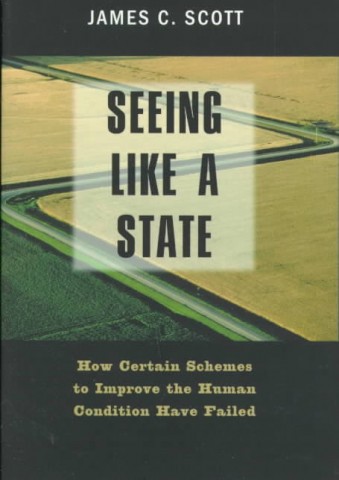Thought provoking quotes from Scott's (1998) Seeing Like A State: How Certain Schemes to Improve the Human Condition have Failed.
The rationale:
- "The publicly stated rationale for planned settlement schemes was almost always couched in the discourse of orderly development and social services (such as the provision of health clinics, sanitation, adequate housing, education, clean water, and infrastructure). The public rhetoric was not intentionally insincere; it was, however, misleadingly silent about the manifold ways in which orderly development of this kind served important goals of appropriation, security, and political hegemony that could not have been met through autonomous frontier settlement." (p. 191)
The response:
- "Rural Tanzanians were understandably reluctant to move into new communities planned by the state. Their past experience, whether before independence or after, warranted their skepticism. As cultivators and pastoralists, they had developed patterns of settlement and, in many cases, patterns of periodic movements that were finely tuned adaptations to an often stingy environment which thy knew exceptionally well. The state-mandated movement threatened to destroy the logic of this adaptation. Administrative convenience, not ecological considerations, governed the selection of sites…" (p. 235)
- "What is significant, however, is that the modern planned village in Tanzania was essentially a point-by-point negation of existing rural practice, which included shifting cultivation and pastoralism; polycropping; living well off the main roads; kinship and lineage authority; small scattered settlements with houses built of higgledy-piggledy; and production that was dispersed and opaque to the state. The logic of this negation seemed often to prevail over sound ecological or economic considerations." (p. 238)
When it all falls apart:
- "Lest there be any doubt that villagization meant central control and not simply village formation and communal farming, the sorry fate of the Ruvuma Development Association (RDA) settled the matter. The RDA was an umbrella organization representing fifteen communal villages scattered over one hundred miles in the Songea, a remote and poor district in the southwestern part of the country. Unlike most ujamaa villages, these were the spontaneous creation of young local militants in TANU. They began in 1960, long before Nyerere's policy declaration in 1967, with each village inventing its own forms of communal enterprise. Early on, Nyerere singled out one of the villages, Litowa, heralding it as a place where he could send people to see rural socialism in action. Its school, milling cooperative, and marketing association were the envy of neighboring villages. Given the high level of patronage and financial backing the villagers attracted, it is hard to tell how economically sound their enterprises were. They did, however, anticipate Nyerere's declared policy of local control and nonauthoritarian cooperation. The villagers were, on the other hand, independent and assertive vis-à-vis the state. Having won over many of the local party officials and having pioneered village cooperation on their own, they were not about to let themselves simply be absorbed into bureaucratic party routines. When each family in these villages was ordered to one acre of fire-cured tobacco, a crop they considered to be labor-intensive and without profit, they openly protested through their organization. In 1968, following a high-level visit by TANU's central committee, the RDA was officially banned as an illegal organization, its assets seized, and its functions assumed by the party and bureaucracy. Although it put into practice Nyerere's espoused goals, its refusal to fit into the centralized scheme of the party was fatal." (p. 233-234)
What is lost:
- "The logic of actual farming is one of an inventive, practiced response to a highly variable environment, the logic of scientific agriculture is, by contrast, one of adapting the environment as much as possible to its centralizing and standardizing formulas." (p. 301)
- "It goes without saying that the farmer was familiar with each of several varieties of any crop, when to plant it, how deeply to sow it, how to prepare the soil, and how to tend and harvest it. This knowledge was place specific in the sense that the successful growing of any variety required local knowledge about rainfall and soils, down to and including the peculiarities of each plot the farmer cultivated. It was also place specific in the sense that much of this knowledge was stored in the collective memory of the locality: an oral archive of techniques, seed varieties, and ecological information. Once the farmer was moved, often to a vastly different ecological setting, his local knowledge was all but useless." (p. 251)
- "Diversity and certain forms of complexity, apart from their attractiveness, have other advantages. In natural systems, we know, these advantages are manifold. Old-growth forest, polycropping, and agriculture with open-pollinated landraces may not be as productive, in the short run, as single-species forest and fields or identical hybrids. But they are demonstrably more stable, more self-sufficient, and less vulnerable to epidemics and environmental stress, needs far less in the way of external infusions to keep them on track." (p. 353)
1473 Hits


